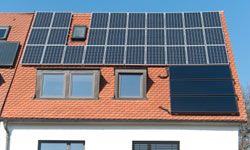We're surrounded by vampires. Only they live on energy, not blood. That big-screen TV, your computer, Xbox, furnace, refrigerator, stove, microwave -- they all suck energy. Some, like your cable box or DVD player, are truly ghoulish: They drink energy even when not in use.
These power-hungry monsters can do some serious damage. About 70 percent of our energy comes from non-renewable sources like oil and natural gas. When they're gone, they're gone for good. Also, some energy sources, such as the coal-burning power plants that generate nearly half of U.S. electricity, pour out carbon dioxide, which threatens to change Earth's climate in dangerous ways [source: Dosomething.org].
Advertisement
Energy vampires drain pocketbooks as well. In 2011, each American spent an average of $4,410 a year on energy [source: Clayton]. Putting a stake through the heart of energy waste can put dollars in your pocket.
There are three simple ways to conserve energy:
- Use energy efficiently. Modern refrigerators use much less energy than older ones. Compact fluorescent and LED lights burn less juice than incandescent bulbs.
- Embrace alternative forms of energy. A passive solar room or photovoltaic outdoor lighting takes advantage of free energy from the sun.
- Stop wasting energy. Fix dripping faucets. Plug leaks where cold air can seep in. Turn off appliances when you're not using them.
To slay the energy vampires, you first have to understand how each of these energy conservation methods works. The experiments that follow can help to make people of all ages more energy savvy -- some may even improve your bottom line.


